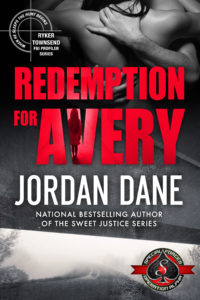No matter what genre any of us write and no matter our individual author voices, there are key elements any author needs to develop and enhance with each new project. The craft of writing is something we all strive to improve with each new book. I’ve listed the broad brush strokes I believe are vital for every author to develop as they write. Let me know if I missed anything you’d like to add.
1. SETTING – Create settings as if they were characters – It’s a fine balance to have enough setting that it lingers in the mind of the reader and becomes an integral part of the story as if it breathed. But if too much detail is written, it can be skimmed by a reader. It’s vital to have the setting as seen through the eyes of the character in the scene, to reflect on his or her nature, but allow the reader only an enticing glimpse. Leave them wanting more and give them insight into your character while triggering imagery in their mind. In the excerpt below, I wanted the essence of the grisly scene on the page without crossing over into the horror genre.
Excerpt – The Last Victim
Ryker Townsend
As the terrain leveled out, a dense canopy of Hemlock and Fir trees towered over me and blocked the steel gray of an overcast sky as a fine mist dappled my FBI windbreaker and cap. I stopped and gazed toward the next rise. I didn’t have to ask how far the crime scene was. A circle of ravens and crows had gathered. Their black winged bodies cut across the gray sky like an ominous Hitchcock montage. The eerie echo of their squawks and their frenzied aerial acrobatics told me all I needed to know.
My body tensed and I emptied my mind to brace for what I’d see as I hit the crest of the hill.
It never failed. When I looked down to the clearing below, standing shoulder to shoulder with my team, a familiar twist hit my gut. I stared at the grisly work of the Totem Killer and forced myself to look beyond the shocking horror. Every severed limb was someone not coming home—a brother, a husband, a boyfriend, a son. The violation clenched my belly, but I owed it to each of the victims not to turn away.
I would have to speak for them now.
“Dear, God,” someone muttered.
A monolith of bloodied flesh stood fifteen feet high like a statue to be idolized. Dismembered legs, arms, and faces were tied to a tree to make a macabre tower. As exhausted as I was, my eyes tricked me into seeing severed limbs that twitched and slithered like entwined snakes under the circling cloud of ravens. When I blinked, the bodies stopped writhing and I let out the breath I’d been holding, but I’d gotten a taste for the dreams that would punish me later.
“We are your sons. We are your husbands. We are everywhere. And there will be more of your children dead tomorrow.”
I couldn’t take my eyes off the bodies as I recited the quote.
“Who said that?” Crowley asked.
“Ted Bundy.”
I wanted to believe in God, but standing there, I couldn’t. With what I see, I don’t hear him anymore.
2. PACE – Avoid the minute-by-minute time line and understand pace – As the author, you are the teller of the story. You choose what will be told and in what order. Most novice authors feel the need to describe every moment in a character’s life in a timeline that doesn’t break, but a reader’s mind can fill in the gaps. Enter Late and Leave Early (ELLE) – I like to call this the Law & Order tip. That TV show created great pace by having it’s cast entering a scene at the moment something major happens and they leave early and leap to the next instant where a key plot point pulls the viewer along. It’s the same for writing a book. Every scene in a book should move the plot forward with 1-3 plot points. There should be a story arc within each scene (a beginning, middle and end) that entices the reader into the scene and progresses forward with hints of things to come. If you can write a foreshadowing detail to the end of the scene, your pace will keep the reader turning the pages. For more on pace and writing a page turner, here is a link to another TKZ post I wrote with more detail on the topic – TEN TIPS on Pace & Structure of a Thriller.
3. CHARACTER – Tease the reader with how your character looks but focus on what’s in your character’s head – I tend not to focus much on my character’s appearance. I’ve learned that, no matter how much you write details, readers have their own images in their minds and there’s nothing wrong with that. I hint at his or her appearance to reflect a key takeaway I want the reader to understand about them. But the most important takeaway the reader will have is their relationship with what’s inside my character–their values, attitude, humor, biases, what makes them tick, and why they are the star of my story. Below is an excerpt from The Last Victim where Lucinda Crowley describes Ryker Townsend, her boss. I try to be a purest when it comes to descriptions and have other characters doing the describing when it fits.
Excerpt – The Last Victim
He had a stare with equal parts intelligence, curiosity and passion. His eyes reminded her of the sweet richness of Chai coffee—the dark and unstirred bottom half of the glass—tinged with a warm drizzle of honey. Ryker had an amazing mind, but there was an intuitive side to his nature that blew her away. To hear him delve into the psyche of the killers they hunted—as if he could connect to them or understood how they hunted their victims—his low voice often gave her chills. Her respect for him had grown over the years and her attraction had only grown stronger, but Ryker had never given her an opening and she didn’t know if she could handle it if he did.
The guy had complex layers and secrets. She knew it, but he was also a one-way trip of the heart.
4. ACTION – Write heart pumping action – It’s not easy writing an action scene that escalates and keeps the reader turning the pages. Physical fight scenes could be skim material if it’s not done right. Too much detail of every balled fist and every jab could be tedious. A car chase could work on the big screen, but too much detail in a book could kill the momentum. A good and effective action scene must hold the reader’s interest by giving enough physical movement, without overdoing the details. Any action must be seen through the eyes of the protagonist in the scene to give the reader a vital anchor point. Below is an excerpt from Evil Without a Face. This scene is only the beginning of a longer action sequence that follows.
Excerpt – Evil Without A Face
Seconds.
Precious seconds.
The SUV barreled down on her, the engine revved. No more time.
Jess held her ground, the Colt Python clutched in her hands. The muscles in her arms taut, her grip solid. Adrenaline surged through her system like coiled lightening.
“Jess? Are you okay?” Seth’s fear stricken voice shot over her earpiece.
Without hitting her com switch, she held her concentration and muttered under her breath.
“Not now, Seth.”
Glare from the headlights nearly blinded her, but once the SUV got close, she could finally see. The bastard’s face came into focus through the murky haze of the windshield. That’s where she aimed—between his eyes. When Jess saw his sudden panic, she squeezed the trigger.
The Python bucked in her grip. Once. Twice. A fierce plume of fire streaked from the muzzle. Deafening blasts echoed down the alley, magnifying the intense explosions.
Her ears rang and muffled everything that followed as holes punched through the windshield with a weighty pop. The glass splintered, sending fissures across the once smooth surface. With one last measure of desperation, she aimed at his crankcase and let the Python do its worst. Baker collapsed behind the wheel and the vehicle swerved. It hit the wall to her right, spraying shards of brick. The shriek of metal stabbed her eardrums, rippling goose bumps across her skin. In a fiery display, sparks showered the air, a giant sparkler on the Fourth of July.
5. SUSPENSE – Build suspense with anticipation – Hitchcock believed suspense didn’t have much to do with fear, but was more the anticipation of something about to happen. When I read this, it was a huge epiphany for me. The idea changed how I thought about scenes and chapter endings. Be patient with building on suspense. Tease the reader with the anticipation of something bad about to happen and hold onto that moment as long as possible. Here is a link to an older TKZ post I wrote on 8 Key Ways to Edit Suspense & Pace into your Finished Manuscript.
6. DIALOGUE – Focus on dialogue to build on conflict – Put characters together who are at odds with each other. This could be two characters who speak differently because of their upbringing or they have very different personalities. Give them a distinctive voice to carry through your book, but when you add conflict between them, it’s like creating a chess match between two key players. To focus on the dialogue, try writing the lines first before you fill in the rest of the scene. Imagine what they would say to each other first and make notes as if you’re writing a script. Here’s a TKZ post I wrote on Writing Dialogue – Tips that gives more details and talks about my technique for focusing on the lines by writing them first. I describe it as “building an onion from the inside out.”
Excerpt – Tough Target
“Don’t take this the wrong way, but the next one who moves gets buckshot.”
Geneva held as still as stone, staring at her unwanted guests. When darkness fell over the cabin, she shifted her eyes toward the only window not boarded. A wall of rain blackened the sky and would soon swallow her neck of the glades and complicate things.
Photos of Sam in happier times hung on the walls and stared back at her. She gritted her teeth and clutched at the shotgun tighter, praying she’d see her boy again.
“Be careful where you point that.” Camila didn’t take her eyes off Geneva.
“Missy, I’m a crack shot. I learned a long time ago to just shoot. Whatever I hit, that’s where I was aiming. Guess you could say I never miss.”
“Is it my men who scare you?” Camila asked. “I can ask them to wait outside.”
The woman kept her voice low and calm. Her eyes never blinked.
“I like ‘em right where they stand. A cottonmouth slitherin’ through the grass is still deadly, even if you can’t see the damned thing,” Geneva said. “You best get to speakin’ your mind, or you can leave.”
“Very well, if you insist.” Camila narrowed her eyes. “Perhaps you would deliver a message to your son.”
The approaching storm darkened the room and shadows played tricks on Geneva’s eyes when they appeared to move. As the mounting winds intensified the rain that pummeled the cabin, the noise and the thick humid smell made her edgy. She gripped the shotgun tighter.
“You picked a fine time to call. Couldn’t your message wait?”
“I’m afraid not. I’ve waited long enough.”
For Discussion:
1.) What writing tips have worked for you? Please share.
2.) What craft topic do you struggle with?
Redemption for Avery now available – Susan Stoker’s Special Forces: Operation Alpha – Amazon Kindle Worlds – $1.99 ebook. While FBI Profiler Ryker Townsend investigates the shocking slaughter of a seventeen-year old girl, the tormented soul of another dead child—the murdered little sister of SEAL Sam “Mozart” Reed—appears to Ryker in broad daylight, drawing Ryker and Mozart into a more sinister conspiracy.



